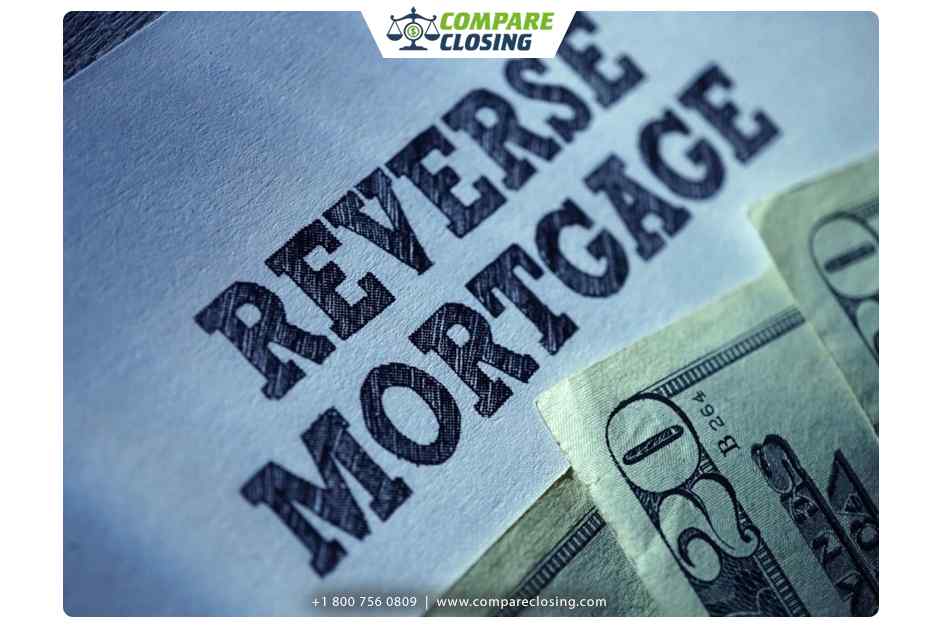Table of Contents
- What Are Netting Escrows & How Does It Work?: The Best Guide - January 2, 2024
- The Secret About Prescriptive Easement: Top Guide 1 Must Know - December 4, 2023
- About Home Equity Loans In Texas And How Can One Obtain It - November 27, 2023
About Reverse Mortgages
A reverse mortgage essentially helps you turn your home into a source of income without actually putting it up for sale.
However, it is always important to know and understand what you are getting into before you completely get into it. So let us take a detailed look into Reverse mortgages.
What are Reverse Mortgages?
Reverse mortgages, in simple terms, are a type of loan through which a homeowner with substantial home equity can borrow and receive funds as a lump sum, line of credit, or fixed monthly payments.
Reverse mortgages do not require the borrower to make loan payments. However, after the sells the home, moves permanently leaving the home, or passes away, the entire loan amount then becomes payable and is due.
The lenders, according to the Federal regulations, are required to structure the transactions in such a way that they do not go above the value of the home.
Also, if in case the loan balance does exceed the market value of the home, the borrower will not be responsible for payment of the difference.
This usually happens due to reasons like a drop in the market value of the home.
How do Reverse Mortgages work?
The basic requirement for a homeowner to qualify for a reverse mortgage is that he/she needs to be at least 62 years old and must be using the home as his/her primary residence.
The borrower must also either owe a considerably small amount from the traditional ‘forward’ mortgage or own the home in question.
Reverse mortgages give the borrower access to a line of credit, a series of monthly payments, or a lump-sum loan, by converting a part of the home equity.
The Federal Housing Administration insures most of the reverse mortgages which are known as HECMs – Home Equity Conversion Mortgages.
Although ha number of states have their version of the loan and private lenders offer reverse mortgages that are not insured by the government, each of these loans operates in a very similar way.
When borrowing the money, the borrower retains the title to the home, however, when the borrower dies or the home is sold, the loan must then be repaid to the lender.
Pros and Cons of Reverse Mortgages
When you are 62 years or older and your home equity is your biggest asset, reverse mortgages could be a good way to acquire cash for your expenses.
If you are paying your property taxes, insurance premiums, and maintenance and have not been in an assisted living facility or a nursing home for more than a year, the reverse mortgage will let you continue in your home.
However, taking a reverse mortgage could also mean that your home will not be passed down to your heirs and it will require you to spend a considerable amount of your home equity on interest and loan fees.
It may not be worth the sacrifice after all if the reverse mortgage only provides a short-term and not a long-term solution to your financial problems.
The Fees Involved
Apart from the interest you or your home will owe to the lender upon being sold, there are several other fees associated with reverse mortgages and it is thus important to understand that such loans can prove to be more expensive than they appear to be initially.
- Servicing fees – Your lender may charge you for mailing the account statements and sending you the check every month. The lenders are allowed to charge the borrowers about $30 every month for a fixed-rate mortgage or a mortgage whose interest rate changes only once a year, and about $35 a month for the mortgages with interest rates that are reset each month, according to the government guidelines.
- Origination fee – A lender can charge you 2% of the first $200,000 of the value of your home and 1% on the amount beyond this $200,000 -or- just $2,500, whichever of the amounts is higher, up to a maximum fee of $6,000.
- Mortgage insurance premium – The government charges the homeowners with FHA loans two insurance premiums in order to reimburse the lender in case the home sells for an amount lesser than the loan amount. These are upfront MIP that is equal to either 0.5% or 2.5% of the appraised value of the home depending on the amount you borrowed in the first year. Apart from this, the borrower must also pay an annual premium equivalent to 1.25% of the loan balance.
- Closing costs – The closing costs cover the appraisal fee, title insurance, and the inspection fee. There is no limit to these charges and so it is advisable to shop around and see fees and costs do different lenders pass on to the borrower.
These costs can add up to a lot without a doubt, and thus experts advise on taking out reverse mortgages as a line of credit rather than a lump sum in order to keep preserve more equity in the home and avoid some unnecessary fees.
This way you will only be paying annual insurance premiums and interest on the amount you really need, and it would be even better if you can find a way to alter your spending habits and avoid the loan altogether.
Amanda Byford
Amanda Byford has bought and sold many houses in the past fifteen years and is actively managing an income property portfolio consisting of multi-family properties. During the buying and selling of these properties, she has gone through several different mortgage loan transactions. This experience and knowledge have helped her develop an avenue to guide consumers to their best available option by comparing lenders through the Compare Closing business.





